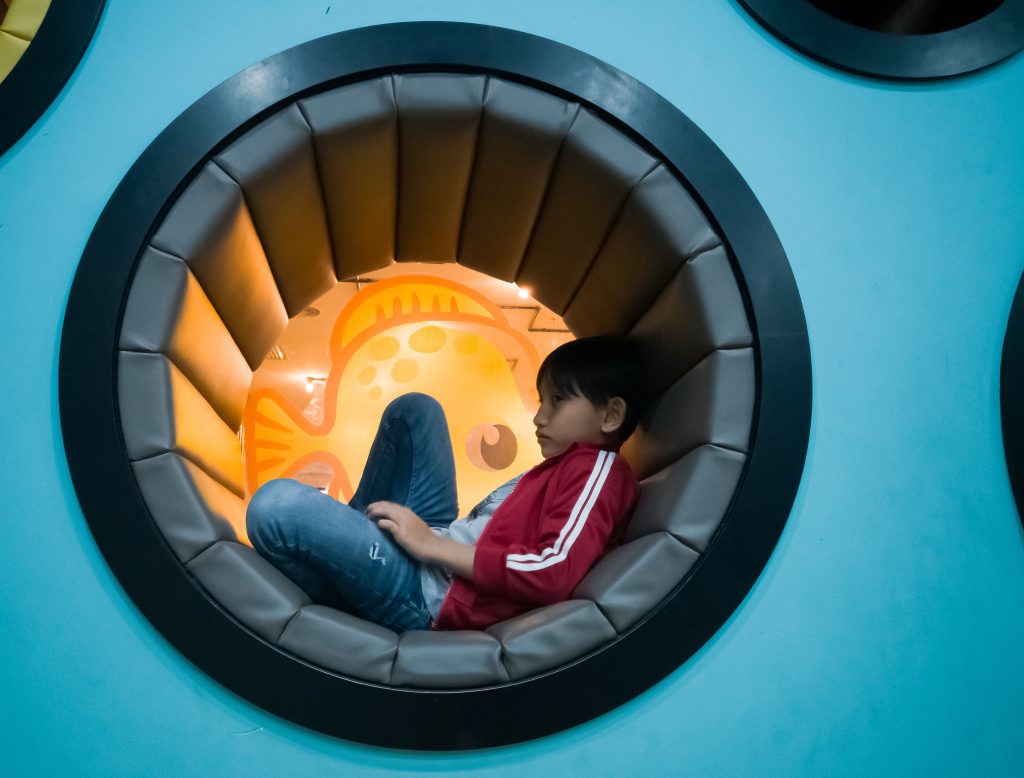Visiting a museum should be an enriching experience for the whole family. For families of children with disabilities, this is not always the case. In San Diego County, more than 500,000 people live with a disability, and when public spaces like museums are not equipped to support the needs of these individuals, it doesn’t just exclude the child, it excludes the entire family.
When a child with special needs feels safe and comfortable in a space, parents are much more likely to return and make it part of their regular routine. With a few intentional changes, museums can create truly inclusive experiences that are welcoming and accessible to all families. This not only broadens your audience but also ensures that every visitor feels supported and able to fully participate.
Keep your museum inclusive with these seven effective tips. Each includes recommendations and resources that incorporate universal design principles and accessible approaches into your community.
1. Offer Sensory-Friendly Hours
Why it matters:
Some families avoid museums because crowds, lights and noise can be overwhelming for children with sensory sensitivities. Setting aside special sensory-friendly hours with a quieter environment helps make the museum more accessible and enjoyable for these families.
How to get started:
- Choose less busy hours during the week or select a naturally quiet time — like early mornings
- Reduce lighting and sound where possible
- Limit announcements and music
Helpful resource:
- Creating Sensory-Friendly Experiences: https://www.guggenheim.org/accessibility/guggenheim-for-all/guggenheim-for-all-toolkit/creating-a-sensory-friendly-environment
2. Create a Quiet Space
Why it matters:
Even with the best planning, some children may still feel overstimulated. Having a quiet space to take a break can help families stay longer and feel more at ease during their visit.
How to get started:
- Set aside a small room or corner with low lighting and soft seating
- Add calming items like fidget toys
- Keep signage simple and clear so families can easily find it
- Make sure all staff members know where it is, the intention and can guide visitors to it when needed
Helpful resources:
- How to create a quiet space: https://www.nbcrightnow.com/national/every-kid-needs-a-quiet-place-here-s-how-to-create-one-at-home/article_219d7032-6262-5ffb-8c13-5787daff1511.html
- How to create a calming room: https://www.alexanderyouthnetwork.org/calming-rooms
3. Provide Sensory Kits at the Front Desk
Why it matters:
Sensory tools like fidget items, noise-canceling headphones or visual timers can help kids manage their sensory needs and feel more comfortable in unfamiliar spaces.
How to get started:
- Assemble kits with items like stress balls, sunglasses and visual aids
- Offer them at the front desk for free use during the visit
- Train staff to explain what’s inside and how to use them
- Set up a plan to clean and restock items regularly
4. Use Clear Signage and Visual Aids
Why it matters:
Children with special needs, especially those who are nonverbal or have developmental delays, often benefit from visual cues that help them understand what to expect and how to move through a space.
How to get started:
- Use simple, universal icons for restrooms, exits and quiet areas
- Include photos or visuals in printed or digital materials
- Label exhibits clearly and consistently
Helpful resource:
- Accessible Communications Guidelines: https://www.aam-us.org/2021/07/01/accessible-communications-guidelines
5. Train Staff
Why it matters:
Staff play a huge role in making families feel welcome. Friendly, patient and informed staff can turn a stressful visit into a great experience.
How to get started:
- Provide basic disability awareness and inclusion training
- Include scenarios to help staff practice common situations
- Teach respectful language and communication strategies
- Make inclusion training part of onboarding and ongoing learning
- Provide security with training on your museum’s accessibility features and being respectful
Helpful resources:
- Staff Training Handbook: https://www.artbeyondsight.org/handbook/az-stafftraining.shtml#staff
- IMLS: Accessibility Resources for Museums: https://www.imls.gov/issues/national-issues-priorities/accessibility-resources-museums-and-libraries
6. Partner With Community Organizations
Why it matters:
Community groups that serve individuals and families with special needs are valuable partners. They can offer insight, support and help spread the word about your inclusive efforts.
How to get started:
- Reach out to local organizations serving kids with disabilities. These can be found in the Flourishing Families resource guide.
- Offer space for co-hosted events or sensory days
- Build ongoing relationships, not just one-time events
- Provide passes to therapists so clients can practice visits and return with their families
7. Promote Sensory Accommodations to the Community
Why it matters:
Sharing what your museum offers helps guests plan visits and feel confident before walking in the door. Even the best accommodations won’t help if families and individuals don’t know about them.
How to get started:
- Create an “Accessibility” page on your website with clear details
- Highlight sensory accommodations in emails, blogs and social media
- Advertise your programs in Flourishing Families — the most trusted resource guide in San Diego and Imperial counties for families and caregivers of children and adults with special needs. To be included, email specialneeds@sandiegofamily.com
When museums take steps to become more inclusive, they open the door to new families who are eager to learn, explore and connect. Starting small, like offering a sensory-friendly hour or adding visual signage, can have a big impact. With ongoing support and community input, your museum can become a place where all families feel welcome, comfortable and excited to return. We appreciate all you do to support people with disabilities, and we would love to share it with the community.
For more support or to see how other museums are making inclusive changes, visit www.SNRFSD.org.

Leave a Reply